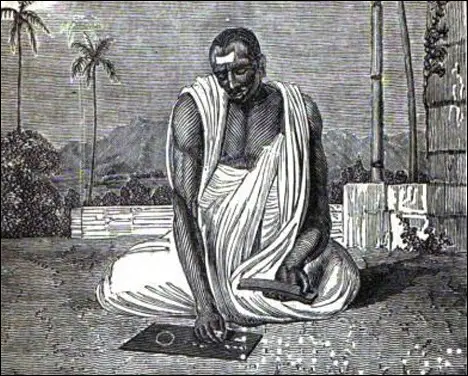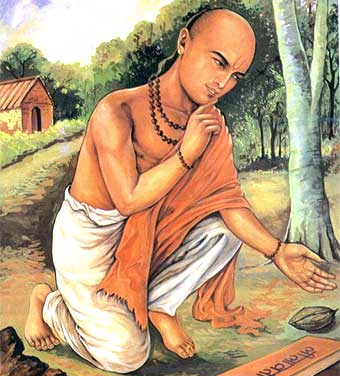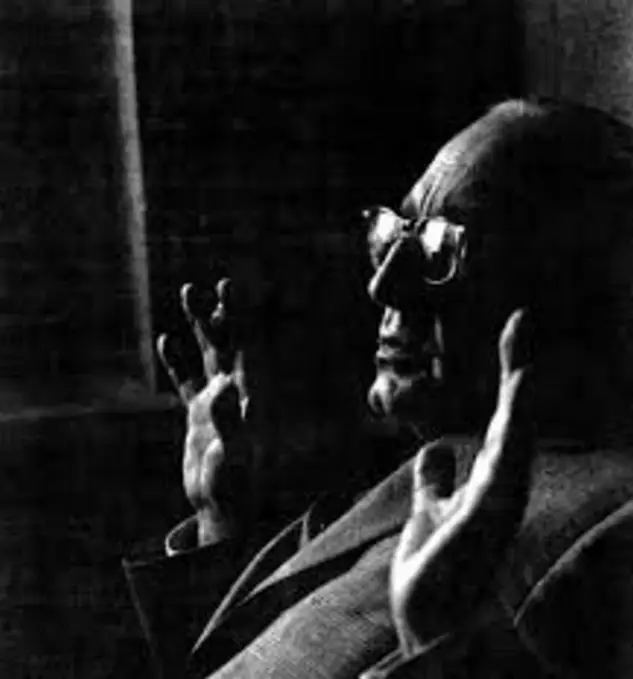Centuries before Galileo and Newton some Indian scholars such as Brahmagupta and Bhāskara Acārya, heirs of the millenary knowledge of the Vedas, they had already theorized the heliocentric model and the force of gravity; and again, calculus, second degree equations and the number zero.
di Valentino Bellucci
Colonialism has destroyed not only entire peoples and civilizations, but sometimes even historical truth. In India already centuries before Copernicus there were already astronomers who had demonstrated, with physical and mathematical precision, the heliocentric vision. Scholars such as Brahmagupta (598 - 668 AD) and Bhāskara Acārya (1114 - 1185 AD) are the heirs of the millennial esoteric knowledge of the See and their mathematical and astronomical discoveries are the fruit of this millenary knowledge still hidden from humanity or misunderstood today [1].
Brahmagupta was the first mathematician to consider zero according to modern canons and was able to solve important problems related to second degree equations and described the force of gravity. Even more extraordinary are the studies of Bhāskara Acārya: he understood the infinitesimal calculus centuries before Newton and Leibniz, he deepened the properties of zero and the heliocentric model of the planetary system (already exposed in 499 by Aryabhata), calculating the rotation time of the earth around the sun. Many Eurocentric scholars have tried, in vain, to show that Bhāskara's mathematical and astronomical discoveries were the fruit of Western influence: but the exact opposite is true.

The enigma of zero
Brahmagupta was a great astronomer and his mathematical skills were extraordinary. He was in charge of the astronomical observatory of Ujjain, a city that dates back to the time of the historical poem Mahabharata and which represents the prime meridian for Vedic wisdom; this means that perfect astronomical knowledge was not separated from a sacred use and purpose, that is, the astrological-karmic calculation.
Unlike contemporary astronomy, which sees the cosmos as a blind person sees colors, Vedic astronomy knew how to understand the correspondences and the divine plan manifested in the universe. The zero which is not an 'Arabic number' but by the Arabs was brought to Europe. Zero is an enigma, since it does not represent a certain quantity but it is not even the nothing. After all, the nothingness is an abstraction of the modern mind: Parmenides already pointed out that “nothingness does not exist”. In ancient languages there is the concept of empty. The zero, a figure indicated in Sanskrit as a small circle, will become similar to an ellipse in our country: it is the symbol of infinity, of Brahman which underlies all things, as the energy of the void manifests and sustains the visible - that's why the zero next to each number increases its quantity.
Brahmagupta particularly studied zero as a number in his arithmetic relations; the great mathematician correctly stated the rules concerning negative numbers. The difference from moderns lies in the fact that Brahmagupta, regarding division by zero, does not leave the result undefined but clearly states that 0/0 = 0. Why this determination? In modern mathematics this would be a problem for differential calculus. But the position of the mathematician here is also philosophical and metaphysical. The Absolute divided by the Absolute always gives the Absolute, that is, the Divine. A dynamic and never static Absolute, as in certain negative Western theologies. Furthermore, Brahmagupta proposed the correct way to solve the second degree equations; he was the first in history to solve the Diophantine equation (Diophantus had given a particular solution of an indeterminate formula, while Brahmagupta provided all the solutions).
Mathematics had an esoteric, initiatory meaning: it was not a merely abstract calculation. Pythagoras learned the mystical significance of mathematics from the Vedic culture, traces of which he found in Egypt and possibly India. Without the mathematical mysticism of the Pythagoreans, Galileo Galilei would not have had his great intuition:
“[The Universe] is written in the language of mathematics. "
But this is a mystical vision of the cosmos, since it presupposes a divine intelligence that knows this language and uses it to give order (cosmos, precisely) to matter. Believing that chance has given a geometric order to the whole is like believing that you can solve exponential calculations by guessing. Galileo Galilei, Giovanni Keplero and Isaac Netwon knew the sacred value of astronomy: let's not forget that Kepler practiced astrology and calculated the date of death of the commander Wallenstein, 1634. Kepler was contemptuous of the extravagant astrologers, who make a superficial and distorted use of an art that only a few initiates know how to practice at a correct and high level.

Gravity and more
Bhāskara Acārya understood infinitesimal calculus, but very few remember it. He wrote important works such as the wash them, il Bijaganita, il Siddhanta Shiromani. There is a particular story regarding the wash them, his text dedicated to arithmetic, which would take its name from a woman, Lilavati in fact, who lost her husband shortly after marriage; the astronomer had predicted this event and to console the widow he dedicated her treatise to her. He deepened the study of zero and infinity by demonstrating that any quantity divided by zero is always infinite; he proposed solutions to indeterminate equations of various kinds and initiated mathematical analysis and integral calculus. His contributions were also very significant in trigonometry.
He resumed the heliocentric vision of Aryabhata which had already described the elliptical orbit of the planets and he devoted himself to deepen the study of universal gravity already expressed by Brahmagupta. Bhāskara was able to accurately calculate many phenomena of the solar system, such as the duration of the sidereal year, in 365,2588 days (with the difference of one minute compared to today's calculations). He also studied solar and lunar eclipses, sunspots and the conjunctions of the planets. Such advances with respect to European science have created no small problems for certain scholars, since there is the danger of recognizing an older and more advanced civilization in the sciences of colonial Europe. But the documents speak for themselves: the mathematical studies of these Vedic scientists anticipate those of Diophantus by centuries.
The decisive aspect of this culture can only be understood by studying i Puranas, encyclopedic and millennial texts that contain advanced knowledge. Astronomers and mathematicians like Bhāskara collect millennia of this knowledge, but recognizing this means rewriting human history, backdating civilization, admitting human presence well before the evolutionary fables that official ideology tells us. For these reasons these great scientists are not highlighted, much less i Puranas are disclosed academically correctly. Admitting the truth of these texts also means admitting their historical narrative, which refers to civilizations that existed not only 10.000 years ago but also millions of years ago, since history is cyclical and non-linear. As he noted George de Santillana [2]:
«… In all modern times, revolution has meant the irreversible […] Yet there is an old sense that is still hidden from us, known to authentic revolutionaries: the return to the origins. "

Go back to the origins
Returning to the true origins of humanity means rejecting the neo-positivist ideology; it means having the courage to change the system of paradigms that humanity has been following for at least three centuries, a false and self-destructive system. Vedic science was part of divine harmony, it was not one break with cosmo; Santillana again [3]:
"The scientific-industrial revolution is a serious thing [...] It generated dreams of salvation [...] on the one hand we made ourselves prisoners of nature through Darwinism and psychoanalysis, on the other we let scientific activity be taken into technical-industrial gear. "
More than dreams we could therefore rightly say that it has generated nightmares. Humanity has eliminated the consciousness of the sacred to throw itself into the unconsciousness of the Technique (the philosopher Emanuele Severino rightly notes [4]: "The technological project of the unlimited production-destruction of all things dissolves all reservations"). When we hear about 'science' or 'scientific' in reality it is an exploitation project that we are listening to, a project where there is only a world of objects, with no more soul. That is why it is crucial to recover a making and a being of science totally different. It is not a question of putting Galileo in the chains of a religion, on the contrary: it's about free science both from the shackles of religions (including that of atheism) and from the shackles of technocratic materialism. To do this, Vedic culture is ideal. Einstein knew this well when he wrote [5]:
«Men like Democritus, Francis of Assisi and Spinoza are closely similar to each other. "
The true mystic is a scientist of the soul and of God and the authentic scientist also has a mystical view of reality. Aryabhata, Brahmagupta and Bhaskara recited every day Vedic mantras, like these: asato mā sad gamaya / tamaso mā jyotir gamaya / mŗtyormā amŗtam gamaya ("from non-real lead me to Reality, from darkness lead me to light, from death lead me to Immortality"). Le Upanisad and of Puranas they are a treasure that westernized scientists should rediscover: perhaps a new Einstein or a new Brahmagupta could be inspired by them.
Note:
[1] S. Balachandra Rao, Indian Mathematics and Astronomy, Lakshmiimudranalaya, Bangalore 2004.
[2] G. de Santillana, Ancient fate and modern fate, Adelphi, Milan 1985, p. 20.
[3] Ibid., page 41 and 42.
[4] E. Severino, Techne, Rusconi, Milan 1979, p. 204.
[5] A.Einstein, The world as I see it, Newton, Rome 2008, p. 44.

2 comments on “Astronomy and Mathematics in Ancient India: The Insights of Brahmagupta and Bhāskara Acārya"